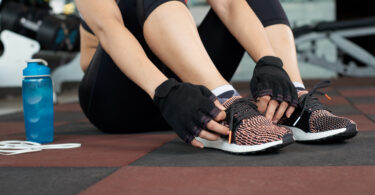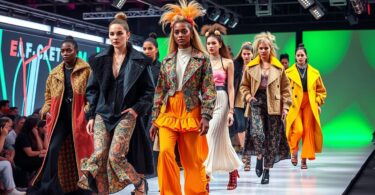Ever thought about how your clothes can speak before you do? In today’s world, dressing for success means more than just wearing a suit. With 79% of U.S. workers changing their style for work, the old rules are changing. How do you stay on top of these changes to impress?
This corporate fashion guide will help you understand the subtleties of professional style. It covers everything from formal suits to smart casual looks. Knowing how to make a great first impression is key, as studies show it happens fast. How do you make sure your style shows you’re credible, especially in traditional or tech industries?
It’s not just about the clothes; it’s about the story they tell. Just like Honolulu’s Aloha shirts in the 1960s, today’s pros are rethinking their style. From law firms to tech start-ups, styling your wardrobe is more nuanced and empowering than ever. Learn about traditional business attire and how big firms like Deloitte and KPMG guide their employees to match their clients’ style.
Exploring business attire, we find key elements that show the right style for your role. A big 69% of hybrid workers think their clothes show their job title and level. Whether you’re in finance or tech, dressing consistently is key to building your brand.
Business casual is now clear and balances comfort with professionalism. It’s about finding the right balance, even on casual days. Your casual clothes should be just one level down from your usual professional look. This shows how important corporate fashion is for perception, productivity, and happiness at work.
Companies like EY and KPMG show there’s no one-size-fits-all in professional wardrobe choices. It’s about knowing your company culture and industry norms. This guide helps you navigate these areas with confidence, ensuring you dress for the job you want, not just the one you have.
Understanding Corporate Fashion Norms and Building Credibility
In today’s corporate world, business fashion for success is more than just dressing up. It’s about showing professionalism and reliability through your clothes. The right outfit can speak volumes about your brand’s credibility before you even say a word. Business attire tips say that knowing and following your industry’s fashion norms can greatly improve how others see you.
Your clothes in a professional setting have a big impact. Wearing consistent outfits, like a brand’s style guide, helps build trust. Companies like Uber and MailChimp pay close attention to their brand’s look, and so should you with your business attire.
But it’s not just about suits and ties. Even on casual days, a well-chosen outfit can show you’re both relaxed and professional. Finding this balance is key, especially in casual settings. With nearly 90% of consumers valuing authenticity, showing genuine professionalism through your clothes is essential for making a strong impression.

Effective business fashion for success also means fitting in with your company’s culture and industry norms. For example, the creative field might allow more colorful and varied outfits than finance or law. So, it’s important to observe and adapt to your surroundings.
To wrap up, whether you’re writing an email or picking out clothes for the next day, being consistent and fitting is crucial. Just as a clear brand style guide builds trust for a company, a well-chosen wardrobe can do the same for a professional aiming for success in any corporate setting.
Business Professional Attire: Key Elements for Traditional Industries
The key to looking sophisticated in finance, government, and law is business professional dress. This style is conservative and neutral. It makes the wearer look professional and respected. Research shows that the right clothes can improve thinking and planning, important for these jobs.
Choosing the right business professional dress is more than picking a suit. Men should wear navy, black, or grey suits with white shirts and simple accessories. Women should opt for tailored suits in neutral colors with simple blouses and closed shoes. Following these guidelines boosts confidence and self-esteem, as clothes affect how we see ourselves and interact with others.
Wearing the same style of office attire promotes teamwork and respect. It shows professionalism and is noticed quickly. Being well-dressed can lead to better jobs and higher pay, proving the value of quality clothes.
Building a wardrobe for traditional industries is an investment in your career. Keeping clothes clean and well-maintained is as important as buying them. This ensures your professional image stays strong.
Business professional attire is more than clothes; it’s a tool for presenting yourself in a professional setting. Following these dress codes helps professionals succeed in their careers.
The Business Style Guide: Navigating Office Attire with Confidence
Knowing the basics of business attire tips is key to building a wardrobe that looks professional and feels good. Whether you’re in finance or law, or in a more casual work setting, learning these rules is crucial. It helps you dressing for success.
Starting out in the corporate world or moving to a new job means dressing right. You’ll need suits, button-down shirts, and accessories like ties and shoes. These pieces are important for looking good and following the rules. But, they might need to be dry-cleaned, which can cost money and time.
Switching to business casual or smart casual gives you more freedom. You can wear dresses, nice shirts with shoes, or even dark jeans. This is perfect for places where the dress code is relaxed but still professional.
Seasons and how you get to work also affect what you wear. In summer, choose lighter clothes and sandals. For those who commute, find clothes that are comfy but still look good.

Being confident in your office attire isn’t just about following rules. It’s about making these rules fit your style and work culture. Watch what others wear, talk to your boss about dress codes, and keep up with trends online. These steps help you get respect and acceptance at work.
Remember, ‘dressing for success’ isn’t just about the clothes you wear—it is about how effectively you adapt these choices to your work environment while maintaining comfort and confidence.
Decoding Business Casual: Comfort Meets Professionalism
The business casual style started in the 1980s and 1990s. It mixed comfort with professionalism. Men wore dress slacks or khakis, and women chose skirts or dress pants. This style was less formal than traditional business attire but still suitable for work.

Today, what makes up a professional wardrobe for business casual varies by industry. Media, non-profits, and education allow for more personal style. But, it can be tricky to know what’s right because it means different things in different places.
When it comes to shoes, stick to closed-toe options with heels under three inches. Sneakers, flip-flops, and casual sandals are too casual for most business casual settings. Accessories should be simple, like classic watches or subtle jewelry.
It’s important to consider the season, company culture, and your industry when choosing your outfit. Business casual is not just a middle ground. It’s a way to express yourself while still looking professional. It’s great for meetings, team events, or office parties.
In the end, business casual style is more than just a dress code. It shows what a company stands for and who you are as a professional. Having a solid professional wardrobe with versatile pieces like tailored slacks and professional shirts is key. It prepares you for any business setting and shows you’re in tune with modern professional trends.
Adapting to Modern Dress Codes: Smart Casual and Beyond
Workplaces are changing, and so are the rules about what to wear. Now, many offices embrace ‘smart casual’ as a key part of their dress code. This style is all about mixing comfort with a touch of elegance.
It’s especially popular in tech startups, where 48% of places allow jeans and nice tops. This mix of casual and professional is perfect for a modern work environment.
Smart casual stands out because it lets people express themselves while still looking polished. For women, tailored blazers are a must-have, chosen by 73%. They’re great for any setting.
Bright blouses and stylish pants are also big hits, with 41% and 58% of women liking them. Even shoes get a nod, with 37% going for block heels for their style and comfort.
This shift in dress codes reflects a broader cultural change. From the 1980s to today, work clothes have evolved. Now, it’s all about finding the right balance between style and comfort.
Whether it’s business casual or formal, the key is to look good and feel confident. Smart casual is more than a trend; it shows how much we value being ourselves at work.







